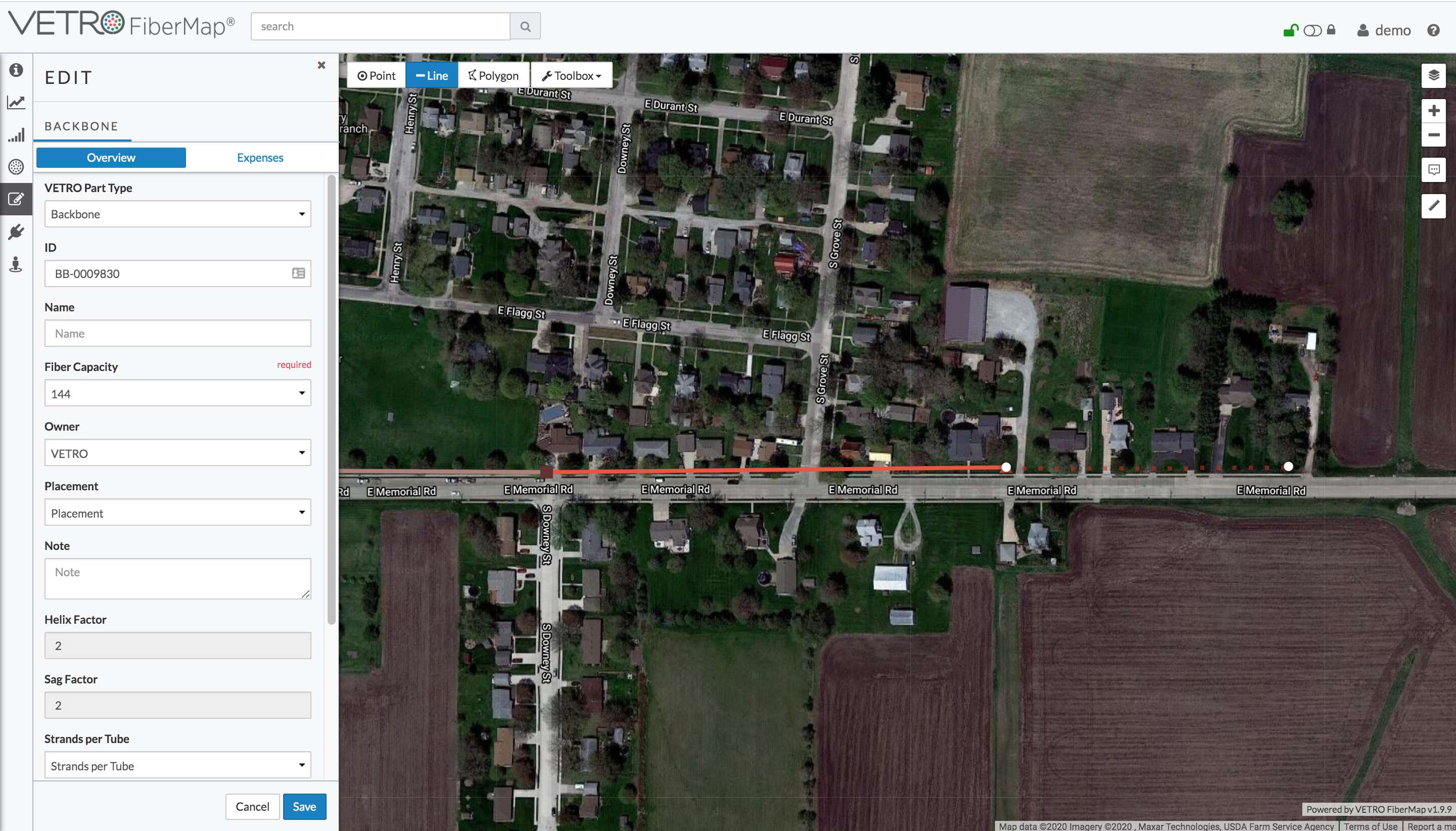
Q&A: How broadband demand spurred growth of network mapping service
 Courtesy / VETRO FiberMap
VETRO FiberMap co-founder and CEO Will Mitchell is overseeing growth spurred in part by need for expanded broadband due to the pandemic.
Courtesy / VETRO FiberMap
VETRO FiberMap co-founder and CEO Will Mitchell is overseeing growth spurred in part by need for expanded broadband due to the pandemic.
VETRO FiberMap is a Portland startup whose cloud-based fiber management software platform is used by telecommunication companies to plan, map and manage their fiber optic networks.
The platform enables people who need fiber network information — from engineers to sales and marketing personnel — to access data remotely, using a web browser.
Will Mitchell and Sean Myers launched the company in 2016 to meet the needs of an increasing number of small and mid-size internet service providers, municipalities, electric cooperatives and other broadband providers.
Today, the company, a C corporation, serves hundreds of customers around the world. In 2020, as the need for internet access skyrocketed, VETRO raised $2.5 million and is now expanding its technical team.
Mitchell grew up in Vassalboro and earned a master’s degree in geographic information systems technology, which combines geography and data. In 2008, Mitchell and Myers launched NBT Solutions, a Portland company that built custom web-based GIS mapping solutions for multiple industries, including telecom.
Mainebiz asked Mitchell about VETRO’s growth through the pandemic. Here’s an edited transcript.
Mainebiz: You call the company a ‘mature startup.’ How did you get from NBT to VETRO?
Will Mitchell: NBT was a services business that did contract mapping software jobs. We discovered the software used for wireline telecom [transmission over physical lines, such as landlines] network mapping was more than a little stale. So we decided to build a better solution for fiber management.
At the same time, the whole world was figuring out we needed to modernize our internet infrastructure and build fiber optic networks. This is a trend that’s accelerating today.
Around 2017 we raised a seed round of a little over $1 million to become a product company. For the last three years, it’s been snowballing. We raised bridge capital in the interim period and then a second investment round of $2.5 million in 2020, in the middle of the pandemic, to fuel our next phase of growth.
We have a long list of angel investors local to Maine, plus strong institutional backing from the Maine Venture Fund, CEI Ventures, the Maine Technology Institute and others. In the 2020 raise we also attracted significant private investment from out-of-state, specifically York IE and individual investors from New Hampshire.
MB: What does mapping mean as it pertains to broadband?
WM: The telecom business is fundamentally spatial and dependent on mapping. The network is the asset, and knowing where it is and how it is connected is a prerequisite to delivering services.

Internet service providers use VETRO mapping as a canvas on which to design their network, starting with every home or business that needs service and then drawing a line to reach those homes. Where we differentiate is that you don’t just see lines and points on the map; you see what’s inside them.
A fiber cable contains strands, each the size of a hair follicle, bundled together. Our map system inventories the strands, which allows network engineers to document how they’re put together, how the fibers are spliced. That gets very complex if you have hundreds or even thousands of strands that are cross-connected.
MB: If they don’t have the level of detail you provide, how do internet service providers keep track of their network?
WM: I call them ‘dumb maps.’ It’s CAD [computer-assisted design] drawings or prints that show a map of the cable routes. And for splicing details, imagine a giant spreadsheet that’s essentially just somebody’s notes. We’ve merged all of that into a management platform delivering what we refer to as ‘internet infrastructure intelligence.’
Networks seem like they would be static, but they’re very dynamic. Things get changed every day: new connections are made, new cables are built, things are damaged or broken and have to be repaired or moved. That’s the physical layer. Then you have the operational or virtual layers on top of that. That’s the internet data that’s traveling to your house over the physical layer. That traffic is extremely dynamic and it needs to be routed and monitored and managed in conjunction with the physical layer.
MB: Could you provide an example of how a customer uses your platform?
WM: Our customers in Maine include a number of small internet service providers that are building high-speed fiber to the home. Examples include Pioneer Broadband in Houlton, GWI in Biddeford, Axiom in Machias and Premium Choice Broadband in Brewer. Smaller ISPs were our original core market, but we are quickly gaining many large customers, too. They’re all using VETRO mapping to guide the planning, design, cost estimation, marketing and construction processes. Once the network is built, they use VETRO to manage that dynamic inventory. So we’re end-to-end, from conceptualizing a new network all the way to hooking up a new customer.
MB: What are your growth trends?
WM: We grew 100% in 2019 and 100% again in 2020 and we’re on a path to double again in 2021.
MB: To what do you attribute your growth?
WM: We operate out of Portland but, being a cloud-hosted subscription service, we’re able to sell nationally and globally. We have customers in 35 states and 20 countries — all of them building new fiber networks.
The macro trends in the market are accelerating. Funding is becoming much more available to drive projects forward. The need for connectivity became front and center to so many conversations and contexts in 2020 — everything from schools to telehealth to doing any kind of remote work. Not being connected and online is not viable anymore. And bandwidth needs to be adequate and plentiful. There’s a ton of activity and investment in the infrastructure that we’re built to enable and serve.
MB: What are your hiring plans?
WM: We’re hiring across the business. Right now, we have four open positions in sales, a couple in engineering and a couple in services. We’ll repeat that cycle on some level each quarter in 2021. We anticipate growing our head count by up to 50% this year. Right now we have 40 people, so by the end of 2021, we anticipate having 55 to 60.
MB: Where will you find employees?
WM: We’re doing a hybrid. We have our office in Portland and we’re about to move into new offices in Portland [at a location to be announced]. We’ve been fully remote for 10 months and when we come back, the local team wants to work two to three days in the office and two to three days remotely, so we’ll take turns in the office.
Our preference is still to hire in Portland, but we’re also hiring outside of the Portland market for certain positions. We’ve cast the net wider because, now that we’ve adjusted to remote work, we’ve found it’s an effective way to recruit top talent and let them work anywhere.
MB: How are you recruiting?
WM: Traditional online advertising and referrals have yielded a lot of results. We’re working with a Portland recruiter who focuses on STEM-qualified New Mainers, which has brought some talent in the door. It’s a mix — half local hiring and half remote. A few people we hired recently are based in other states, such as Indiana, North Carolina and Vermont, and working remotely. We also have a legacy footprint in Buffalo, N.Y., where my co-founder, Sean Myers, was located until couple of years ago when he moved to Maine to focus on growing the company here.
It’s worth noting that three of our recent hires, who weren’t based in Maine, want to move to Maine, and prior to the pandemic, we imported some technical talent to Maine from places like North Dakota, Vermont and Massachusetts. We hope to continue attracting people to move to Portland
One thing we’re excited about is our new partnership with the Roux Institute in Portland. We have our first co-op student from Roux and we expect that to become a new talent pipeline.
MB: What did NBT stand for?
WM: ‘Next big thing.’
MB: And VETRO?
WM: It’s the Italian word for ‘glass’: fiber optic cables are made of glass. Credit goes to Sean for the VETRO name and product concept.










0 Comments